
漢德百科全書 | 汉德百科全书
 科学技术
科学技术
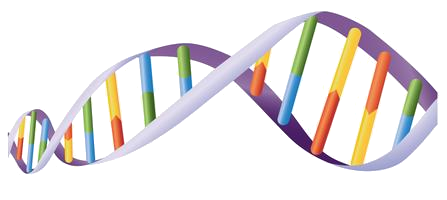
 阿尔斯通
阿尔斯通



 汽车
汽车
 *汽车配件供应商
*汽车配件供应商



 汽车
汽车
 *电动车马达
*电动车马达

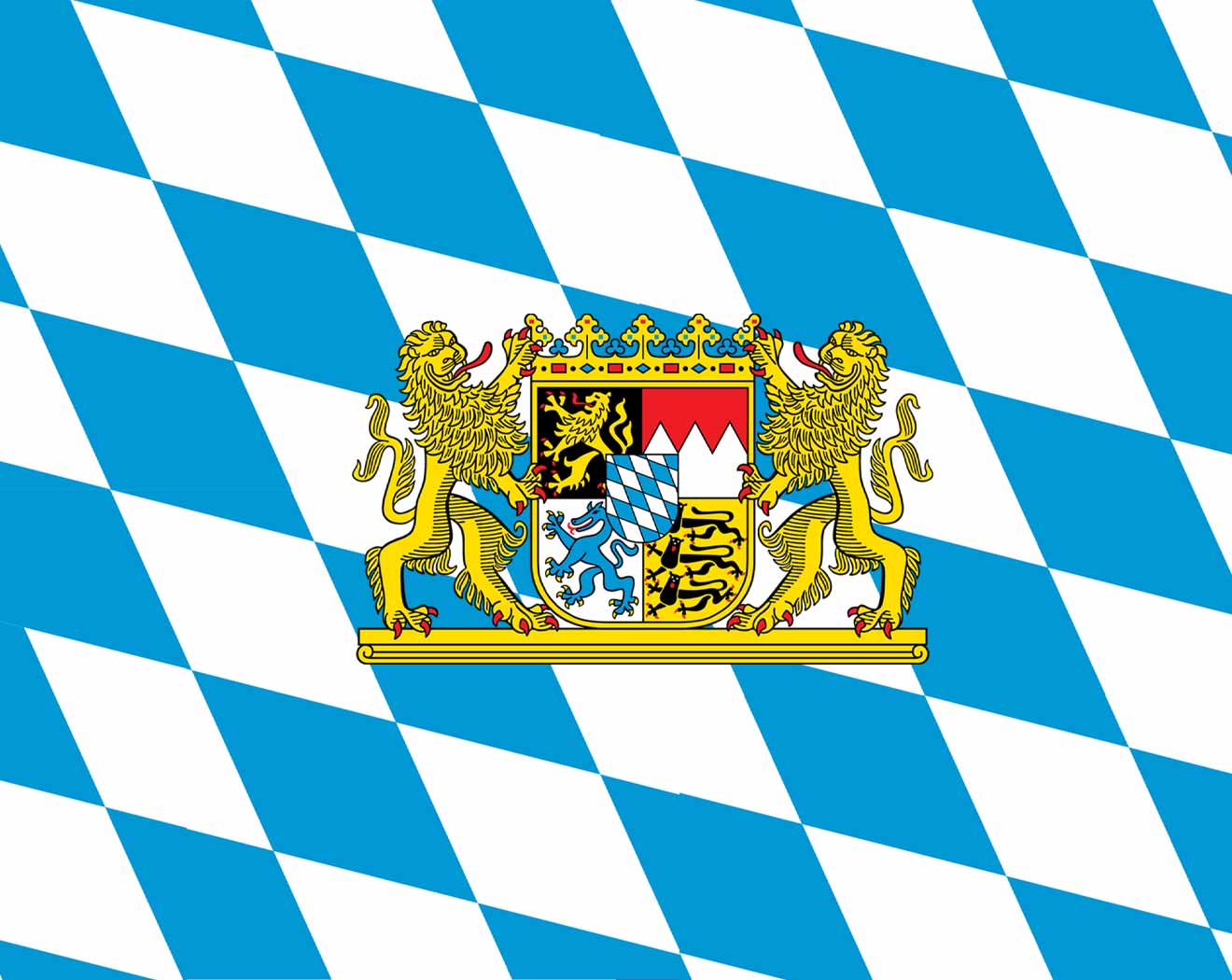 巴伐利亚州
巴伐利亚州

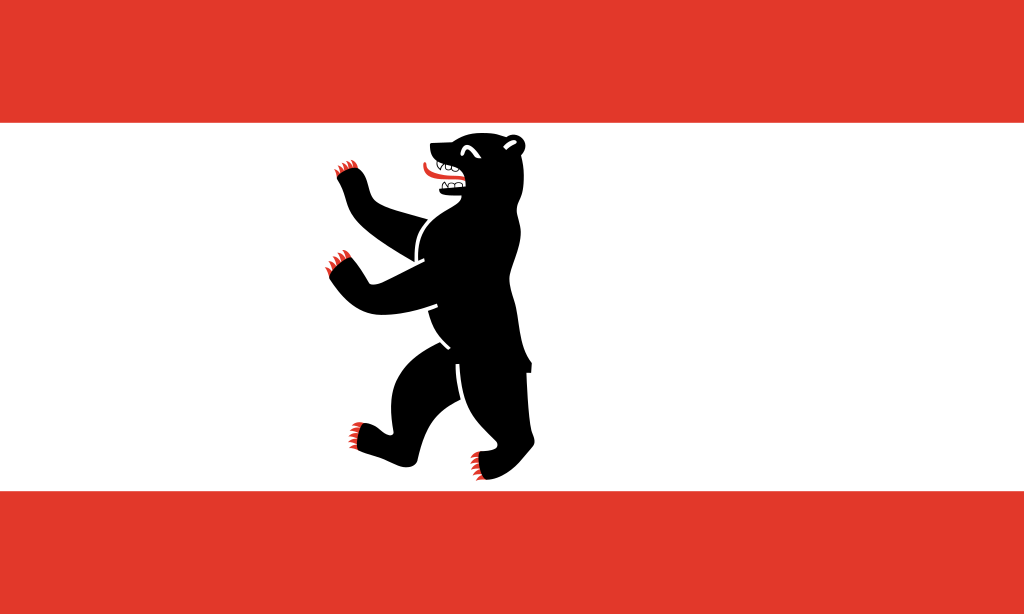 柏林州
柏林州
 联邦德国
联邦德国
 制造与创新
制造与创新

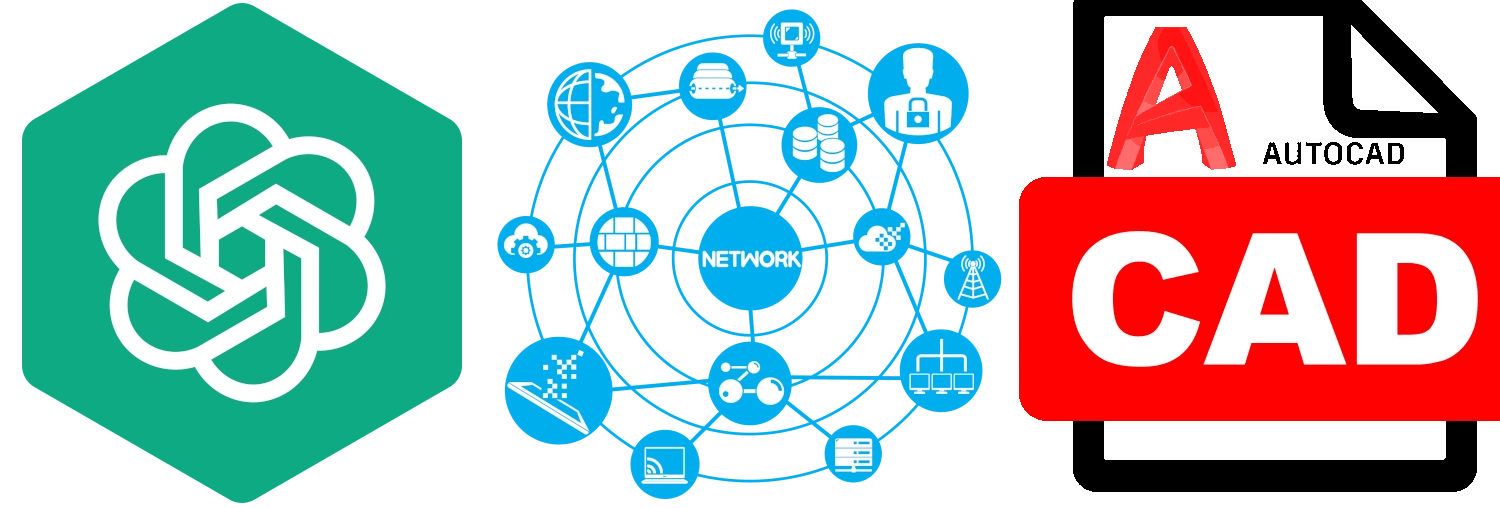
 信息时代
信息时代
 PLC/DCS/FCS/SCADA/MES
PLC/DCS/FCS/SCADA/MES


 信息时代
信息时代
 处理单元 - CPU, GPU, NPU, APU, TPU, VPU, FPGA, QPU, IPU, PIC
处理单元 - CPU, GPU, NPU, APU, TPU, VPU, FPGA, QPU, IPU, PIC


 信息时代
信息时代
 精密仪器/医疗设备/科研设备
精密仪器/医疗设备/科研设备


 信息时代
信息时代
 物联网
物联网


 信息时代
信息时代
 传感器
传感器

 厨房设备
厨房设备

 生活时尚
生活时尚
 西门子
西门子
 ICE-1
ICE-1
 西门子
西门子
 ICE-2
ICE-2
 西门子
西门子
 ICE-3
ICE-3
 西门子
西门子
 ICE-T
ICE-T
 西门子
西门子
 Velaro
Velaro
 西门子
西门子
 AVE S103
AVE S103
 高速铁路技术
高速铁路技术
 轮轨系统
轮轨系统
 高速铁路技术
高速铁路技术
 动力分散式
动力分散式
 高速铁路技术
高速铁路技术
 动力集中式
动力集中式

 运输和交通
运输和交通
 高速铁路
高速铁路

 运输和交通
运输和交通
 高速铁路技术
高速铁路技术

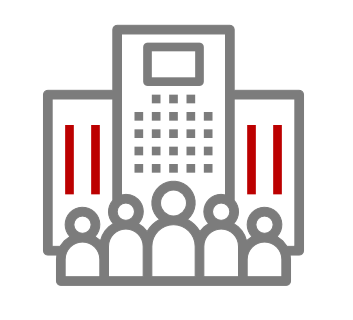 企业
企业
 *大的高速铁路制造商
*大的高速铁路制造商

 企业
企业
 *大的电力公司
*大的电力公司

 企业
企业
 *世界百年企业
*世界百年企业

 科学技术
科学技术
 世界创新企业
世界创新企业

Siemens ist ein integrierter, börsennotierter Technologiekonzern mit der Siemens AG als herrschendem Unternehmen und zahlreichen deutschen und internationalen Konzernunternehmen.
Das Unternehmen wurde als Telegraphen Bau-Anstalt von Siemens & Halske 1847 von Werner Siemens (ab 1888 nobilitiert: „von Siemens“) und Johann Georg Halske in Berlin gegründet. Die heutige Siemens AG wurde 1966 durch Fusion der Vorgängerfirmen Siemens & Halske AG, Siemens-Schuckertwerke AG und Siemens-Reiniger-Werke AG gebildet.
Der Siemens-Konzern hat 125 Standorte in Deutschland und ist in 190 Ländern vertreten. Er zählt weltweit zu den größten Unternehmen der Elektrotechnik und Elektronik. Der Unternehmenssitz ist in Berlin und München.
西门子股份有限公司(德语:SIEMENS AG,德语发音:[ˈziːmɛns])为德国的一家跨国企业,其电子与电机产品是全球业界先驱,并活跃于能源、医疗、工业、基础建设及城市业务等领域。西门子于1847年由维尔纳·冯·西门子建立,总部位于德国慕尼黑和柏林,于法兰克福证券交易所和纽约证券交易所挂牌上市。
シーメンス(独: Siemens AG)は、ドイツのバイエルン州ミュンヘンに本社を置く会社。もともと電信、電車、電子機器の製造会社から発展し、現在では情報通信、電力関連、交通、医療、防衛、生産設備、家電製品等の分野で製造、およびシステム・ソリューション事業を幅広く手がける会社である。フランクフルト証券取引所上場企業 (FWB: SIE)。2006年の連結売上高は873億ユーロ、連結純利益は303億ユーロ。
1847年12月12日に、ヴェルナー・フォン・ジーメンスによってベルリンに創業された電信機製造会社、ジーメンス・ウント・ハルスケに端を発する。後にジーメンス・ハルスケ電車会社に発展し、世界で最初の電車を製造し、1881年に営業運転を開始した。20世紀初頭、ゼネラル・エレクトリックを相手にAEGの支配権を争う格好となり、AEGと関係を深めた。
かつてはリオ・ティントが代表的な株主であったが、現在はミューチュアル・ファンドのバンガード・グループ、マイケル・カレンが2001年に立ち上げたソブリン・ウエルス・ファンドのNew Zealand Superannuation Fundである。
Siemens AG (German pronunciation: [ˈziːməns][4][5][6] or [-mɛns][6]) is a German multinational conglomerate company headquartered in Munich and the largest industrial manufacturing company in Europe with branch offices abroad.[7]
The principal divisions of the company are Industry, Energy, Healthcare (Siemens Healthineers), and Infrastructure & Cities, which represent the main activities of the company.[8][9][10] The company is a prominent maker of medical diagnostics equipment and its medical health-care division, which generates about 12 percent of the company's total sales, is its second-most profitable unit, after the industrial automation division.[11] The company is a component of the Euro Stoxx 50 stock market index.[12] Siemens and its subsidiaries employ approximately 385,000 people worldwide and reported global revenue of around €87 billion in 2019 according to its earnings release.
Siemens (prononcé en allemand : /ˈziːmɛns/) est un groupe international d’origine allemande spécialisé dans les secteurs de l'énergie, de la santé, de l'industrie et du bâtiment. Il a été fondé en 1847 par Werner von Siemens. Le groupe, dont le siège est à Munich, est le premier employeur privé d'Allemagne5, et la plus grande société d'ingénierie (en termes d'effectifs) en Europe.
Siemens AG è una multinazionale tedesca, fondata nel 1847,[3] attiva nei settori delle tecnologie, della mobilità e dei servizi,[4] con sede a Monaco di Baviera e presente con diversi uffici in circa 200 paesi.[5] L'azienda conta circa 385 000 dipendenti a livello mondiale[2] e nel 2019 ha registrato un fatturato di 86,849 miliardi di euro.[1]
Siemens AG (pronunciación alemana: [ˈziːməns]) es un conglomerado de empresas alemana con sedes en Berlín y Múnich considerada como la mayor empresa de fabricación industrial de Europa con 190 sucursales a lo largo del mundo. Siemens opera en 4 sectores principales: el sector industrial, energético, de salud (Siemens Healthineers) y de infraestructuras y ciudades. La empresa se caracteriza por el desarrollo de equipamiento de diagnóstico médico generando un 12% de beneficios después de su división de automatización industrial. Siemens emplea 379.000 personas alrededor del mundo reportando ingresos globales de 83 mil millones de euros en el año 2018. El grupo está representado en 190 países y es una de las compañías más grandes del mundo en ingeniería eléctrica y electrónica.
Siemens AG (нем. Siemens Aktiengesellschaft, в русской традиции «Си́менс»[3]) — немецкий конгломерат, работающий в области электротехники, электроники, энергетического оборудования, транспорта, медицинского оборудования и светотехники, а также специализированных услуг в различных областях промышленности, транспорта и связи. Штаб-квартиры находятся в Берлине и Мюнхене.
Акции компании включены в базу расчёта следующих фондовых индексов: DAX, S&P Global 100, Dow Jones EuroStoxx 50, Dow Jones Stoxx 50, Dow Jones Global Titans 50.

Simon H. Johnson (* 1963 in Sheffield) ist ein US-amerikanischer Wirtschaftswissenschaftler britischer Herkunft. Er war von März 2007 bis August 2008 Chefökonom des Internationalen Währungsfonds (IWF).[1] Seit 2004 arbeitet er als Ronald A. Kurtz Professor of Entrepreneurship an der MIT Sloan School of Management.[2] 2024 erhielt er gemeinsam mit Daron Acemoglu und James A. Robinson den Alfred-Nobel-Gedächtnispreis für Wirtschaftswissenschaften „für Studien darüber, wie Institutionen gebildet werden und den Wohlstand beeinflussen“.
西蒙·H·约翰逊(英语:Simon H. Johnson,1963年1月16日—[1])美国英裔经济学家,麻省理工斯隆管理学院罗纳德·A·库尔茨(Ronald A. Kurtz)创业学教授[2]、彼得森国际经济研究所高级研究员[3]。西蒙曾从事大量学术及政策相关的职务,包括杜克大学福夸商学院经济学教授[4]。2007年3月至2008年8月底,任国际货币基金组织首席经济学家[5]。2020年11月,任乔·拜登总统事务交接局审查小组的志愿成员,支持美国财政部和美联储的交接工作[6]。

希波克拉底(古希腊文:Ἱπποκράτης,前460年-前370年),为古希腊伯里克利时代之医师,约生于公元前460年,后世人普遍认为其为医学史上杰出人物之一。在其所身处之上古时代,医学并不发达,然而却能将医学发展成为专业学科,使之与巫术及哲学分离[2][3],并创立了以之为名的医学学派,对古希腊之医学发展贡献良多,故今人多尊称之为“医学之父”。
世人往往将其文集诸位作者的成就、奉行其医学原则的医师及其本人之事迹相混淆,以致于今天,对其真实想法、所书之文、所做之事知之甚微。然而,其仍被认为对临床医学贡献甚多,并总先世医学之大成,堪称古医师之典范。而其所订立之医师誓言,更成为后世医师之道德纲领,直至今天。[2][4]
约卒于公元前370年,享年90岁。
Hippokrates von Kos (griechisch Ἱπποκράτης ὁ Κῷος; * um 460 v. Chr. auf Kos, wahrscheinlich in Astypalaia/Kefalos;[1] † um 370 v. Chr. in Larisa, Thessalien), latinisiert auch Hippocrates, war ein griechischer Arzt und Lehrer. Er gilt als der berühmteste Arzt des Altertums, dessen Schule die Theorie von vier Körpersäften im Konzept der Humoralpathologie lehrte, und zudem als „Vater der (modernen) Medizin“, der ärztliches Handeln über die Wirkungskraft priesterlicher Worte stellte und einem hohen ethischen Verantwortungsbewusstsein unterordnete. Er gilt als Begründer[2] der Medizin als Wissenschaft, insbesondere als auf umfangreichen Beobachtungen und Beschreibung von Krankheitssymptomen fußender Erfahrungswissenschaft.[3] Von den ihm zugeschriebenen Schriften sind vor allem die Aphorismen verbreitet.

希尔伯特问题(德语:Hilbertsche Probleme)是德国数学家大卫·希尔伯特于1900年在巴黎举行的第二届国际数学家大会上作了题为《数学问题》的演讲,所提出23道最重要的数学问题。希尔伯特问题对推动20世纪数学的发展起了积极的推动作用。在许多数学家努力下,希尔伯特问题中的大多数在20世纪中得到了解决。
希尔伯特问题中未能包括拓扑学、微分几何等领域,除数学物理外很少涉及应用数学,更不曾预料到电脑的发展将对数学产生重大影响。20世纪数学的发展实际上远远超出了希尔伯特所预示的范围。
希尔伯特问题中的1-6是数学基础问题,7-12是数论问题,13-18属于代数和几何问题,19-23属于数学分析。
以下列出希尔伯特的23个问题,各问题的解答状况可参见各问题条目。
| # | 主旨 | 进展 | 说明 |
|---|---|---|---|
| 第1题 | 连续统假设 | 部分解决 | 1963年美国数学家保罗·柯恩以力迫法证明连续统假设不能由策梅洛-弗兰克尔集合论(无论是否含选择公理)推导。也就是说,连续统假设成立与否无法由ZF/ZFC确定。 |
| 第2题 | 算术公理之相容性 | 部分解决 | 库尔特·哥德尔在1931年证明了哥德尔不完备定理,但此定理是否已回答了希尔伯特的原始问题,数学界没有共识。 |
| 第3题 | 两四面体有相同体积之证明法 | 已解决 | 答案:否。1900年,希尔伯特的学生马克斯·登以一反例证明了是不可以的。 |
| 第4题 | 建立所有度量空间使得所有线段为测地线 | 已解决 | 满足此性质的几何很多,因而需要加以某些限制条件。在对称距离情况下,问题获解决。 |
| 第5题 | 所有连续群是否皆为可微群 | 已解决 | 1953年日本数学家山边英彦证明在无“小的子群”情况下,答案是肯定的[1];但此定理是否已回答了希尔伯特的原始问题,数学界仍有争论。 |
| 第6题 | 公理化物理 | 部分解决 | 希尔伯特后来对这个问题进一步解释,而他自己也进一步研究这个问题。柯尔莫哥洛夫对此也有贡献。然而,尽管公理化已经开始渗透到物理当中,量子力学中仍有至今不能逻辑自洽的部分(如量子场论),故该问题未完全解决。 |
| 第7题 | 若b是无理数、a是除0、1之外的代数数,那么ab是否超越数 | 已解决 | 答案:是。分别于1934年、1935年由苏联数学家亚历山大·格尔丰德与德国数学家特奥多尔·施耐德独立地解决。 |
| 第8题 | 黎曼猜想及哥德巴赫猜想和孪生素数猜想 | 未解决 | 虽然分别有比较重要的突破和被解决的弱化情况,三个问题均仍未被解决。 |
| 第9题 | 任意代数数域的一般互反律 | 部分解决 | 1927年德国的埃米尔·阿廷证明在阿贝尔扩张的情况下答案是肯定的;此外的情况则尚未证明。 |
| 第10题 | 不定方程可解性 | 已解决 | 答案:否。1970年由苏联数学家尤里·马季亚谢维奇证明。 |
| 第11题 | 代数系数之二次形式 | 部分解决 | 有理数的部分由哈塞于1923年解决。 |
| 第12题 | 一般代数数域的阿贝尔扩张 | 未解决 | 埃里希·赫克于1912年用希尔伯特模形式研究了实二次域的情形。虚二次域的情形用复乘理论已基本解决。一般情况下则尚未解决。 |
| 第13题 | 以二元函数解任意七次方程 | 部分解决 | 1957年苏联数学家柯尔莫哥洛夫和弗拉基米尔·阿诺尔德证明对于单值解析函数,答案是否定的;然而希尔伯特原本可能希望证明的是代数函数的情形,因此该问题未获得完全解答。 |
| 第14题 | 证明一些函数完全系统(Complete system of functions)之有限性 | 已解决 | 答案:否。1962年日本人永田雅宜提出反例。 |
| 第15题 | 舒伯特演算之严格基础 | 部分解决 | 一部分在1938年由范德瓦尔登得到严谨的证明。 |
| 第16题 | 代数曲线及表面之拓扑结构 | 未解决 | 此问题进展缓慢,即使对于度为8的代数曲线也没有证明。 |
| 第17题 | 把有理函数写成平方和分式 | 已解决 | 答案:是。1927年埃米尔·阿廷解决此问题,并提出实封闭域。[2][3] |
| 第18题 | 非正多面体能否密铺空间、球体最紧密的排列 | 已解决 | 1911年比伯巴赫做出“n维欧氏几何空间只允许有限多种两两不等价的空间群”;莱因哈特证明不规则多面体亦可填满空间;托马斯·黑尔斯于1998年提出了初步证明,并于2014年8月10日用计算机完成了开普勒猜想的形式化证明,证明球体最紧密的排列是面心立方和六方最密两种方式。 |
| 第19题 | 拉格朗日系统(Lagrangian)之解是否皆可解析 | 已解决 | 答案:是。1956年至1958年恩尼奥·德乔吉和约翰·福布斯·纳什分别用不同方法证明。 |
| 第20题 | 所有边值问题是否都有解 | 已解决 | 实际上工程和科研中遇到的边值问题都是适定的,因而都可以确定是否有解。[4] |
| 第21题 | 证明有线性微分方程有给定的单值群(monodromy group) | 已解决 | 此问题的答案取决于问题的表述:部分情况下是肯定的,部分情况下则是否定的。 |
| 第22题 | 将解析关系(analytic relations)以自守函数一致化 | 部分解决 | 1904年由保罗·克伯和庞加莱取得部分解决。详见单值化定理。 |
| 第23题 | 变分法的长远发展 | 开放性问题 | 包括希尔伯特本人、昂利·勒贝格、雅克·阿达马等数学家皆投身于此。理查德·贝尔曼提出的动态规划可作为变分法的替代。 |
| Problem | Brief explanation | Status | Year solved |
|---|---|---|---|
| 1st | The continuum hypothesis (that is, there is no set whose cardinality is strictly between that of the integers and that of the real numbers) | Proven to be impossible to prove or disprove within Zermelo–Fraenkel set theory with or without the axiom of choice (provided Zermelo–Fraenkel set theory is consistent, i.e., it does not contain a contradiction). There is no consensus on whether this is a solution to the problem. | 1940, 1963 |
| 2nd | Prove that the axioms of arithmetic are consistent. | There is no consensus on whether results of Gödel and Gentzen give a solution to the problem as stated by Hilbert. Gödel's second incompleteness theorem, proved in 1931, shows that no proof of its consistency can be carried out within arithmetic itself. Gentzen proved in 1936 that the consistency of arithmetic follows from the well-foundedness of the ordinal ε0. | 1931, 1936 |
| 3rd | Given any two polyhedra of equal volume, is it always possible to cut the first into finitely many polyhedral pieces that can be reassembled to yield the second? | Resolved. Result: No, proved using Dehn invariants. | 1900 |
| 4th | Construct all metrics where lines are geodesics. | Too vague to be stated resolved or not.[h] | — |
| 5th | Are continuous groups automatically differential groups? | Resolved by Andrew Gleason, assuming one interpretation of the original statement. If, however, it is understood as an equivalent of the Hilbert–Smith conjecture, it is still unsolved. | 1953? |
| 6th | Mathematical treatment of the axioms of physics:
(a) axiomatic treatment of probability with limit theorems for foundation of statistical physics (b) the rigorous theory of limiting processes "which lead from the atomistic view to the laws of motion of continua" |
Partially resolved depending on how the original statement is interpreted.[14] Items (a) and (b) were two specific problems given by Hilbert in a later explanation.[1] Kolmogorov's axiomatics (1933) is now accepted as standard. There is some success on the way from the "atomistic view to the laws of motion of continua".[15] | 1933–2002? |
| 7th | Is ab transcendental, for algebraic a ≠ 0,1 and irrational algebraic b ? | Resolved. Result: Yes, illustrated by the Gelfond–Schneider theorem. | 1934 |
| 8th | The Riemann hypothesis ("the real part of any non-trivial zero of the Riemann zeta function is 1/2") and other prime-number problems, among them Goldbach's conjecture and the twin prime conjecture | Unresolved. | — |
| 9th | Find the most general law of the reciprocity theorem in any algebraic number field. | Partially resolved.[i] | — |
| 10th | Find an algorithm to determine whether a given polynomial Diophantine equation with integer coefficients has an integer solution. | Resolved. Result: Impossible; Matiyasevich's theorem implies that there is no such algorithm. | 1970 |
| 11th | Solving quadratic forms with algebraic numerical coefficients. | Partially resolved.[16] | — |
| 12th | Extend the Kronecker–Weber theorem on Abelian extensions of the rational numbers to any base number field. | Partially resolved.[17] | — |
| 13th | Solve 7th-degree equation using algebraic (variant: continuous) functions of two parameters. | Unresolved. The continuous variant of this problem was solved by Vladimir Arnold in 1957 based on work by Andrei Kolmogorov, but the algebraic variant is unresolved.[j] | — |
| 14th | Is the ring of invariants of an algebraic group acting on a polynomial ring always finitely generated? | Resolved. Result: No, a counterexample was constructed by Masayoshi Nagata. | 1959 |
| 15th | Rigorous foundation of Schubert's enumerative calculus. | Partially resolved.[citation needed] | — |
| 16th | Describe relative positions of ovals originating from a real algebraic curve and as limit cycles of a polynomial vector field on the plane. | Unresolved, even for algebraic curves of degree 8. | — |
| 17th | Express a nonnegative rational function as quotient of sums of squares. | Resolved. Result: Yes, due to Emil Artin. Moreover, an upper limit was established for the number of square terms necessary. | 1927 |
| 18th | (a) Are there only finitely many essentially different space groups in n-dimensional Euclidean space? | Resolved. Result: Yes (by Ludwig Bieberbach) | 1910 |
| (b) Is there a polyhedron that admits only an anisohedral tiling in three dimensions? | Resolved. Result: Yes (by Karl Reinhardt). | 1928 | |
| (c) What is the densest sphere packing? | Widely believed to be resolved, by computer-assisted proof (by Thomas Callister Hales). Result: Highest density achieved by close packings, each with density approximately 74%, such as face-centered cubic close packing and hexagonal close packing.[k] | 1998 | |
| 19th | Are the solutions of regular problems in the calculus of variations always necessarily analytic? | Resolved. Result: Yes, proven by Ennio de Giorgi and, independently and using different methods, by John Forbes Nash. | 1957 |
| 20th | Do all variational problems with certain boundary conditions have solutions? | Resolved. A significant topic of research throughout the 20th century, culminating in solutions for the non-linear case. | ? |
| 21st | Proof of the existence of linear differential equations having a prescribed monodromic group | Partially resolved. Result: Yes/no/open depending on more exact formulations of the problem. | ? |
| 22nd | Uniformization of analytic relations by means of automorphic functions | Partially resolved. Uniformization theorem | ? |
| 23rd | Further development of the calculus of variations | Too vague to be stated resolved or not. | — |


Das griechische Alphabet (altgriechisch ἑλληνικὸς ἀλφάβητος hellēnikós alphábētos; neugriechisch ελληνικό αλφάβητο ellinikó alfávito, auch ελληνική αλφαβήτα ellinikí alfavíta) ist die Schrift, in der die griechische Sprache seit dem 9. Jahrhundert v. Chr. geschrieben wird. Das griechische Alphabet umfasst heute 24 Buchstaben, die ebenso wie im lateinischen Alphabet als Majuskeln (Großbuchstaben) und Minuskeln (Kleinbuchstaben) vorkommen.
Die griechische Schrift ist eine Weiterentwicklung der phönizischen Schrift und war die erste Alphabetschrift im engeren Sinne. Vom griechischen Alphabet stammen u. a. das lateinische, kyrillische und koptische Alphabet ab (siehe Ableitung der lateinischen und kyrillischen aus griechischen Buchstaben).
希腊字母源自腓尼基字母。腓尼基字母只有辅音,从右向左写。希腊语是首个拥有元音字母的字母系统。因为希腊人的书写工具是蜡板,有时前一列从右向左写完后顺势就从左向右写,变成所谓牛耕式转行书写法,后来逐渐演变成全部从左向右写。字母的方向也颠倒了。罗马人引进希腊字母,略微改变变为拉丁字母,在世界广为流行。希腊字母广泛应用到学术领域,如数学等。
| 字母 | 名字 | 对应腓尼基字母 | |||||
|---|---|---|---|---|---|---|---|
| 古希腊语 | 现代希腊语 | 英语 | 中文 | ||||
| 名称 | 英式发音 | 美式发音 | |||||
| Α α | ἄλφα /ä́l.pʰä/ |
άλφα /ˈäl.fä/ |
Alpha | /ˈælfə/ | 阿尔法 | ||
| Β β | βῆτα /bɛ̂ː.tä/ |
βήτα /ˈvi.tä/ |
Beta | /ˈbiːtə/ | /ˈbeɪtə/ | 贝塔 | |
| Γ γ | γάμμα /ɡä́m.mä/ |
γάμα /ˈɣä.mä/ |
Gamma | /ˈɡæmə/ | 伽马 | ||
| Δ δ | δέλτα /dé̞l.tä/ |
δέλτα /ˈðe̞l.tä/ |
Delta | /ˈdɛltə/ | 德尔塔 | ||
| Ε ε | εἶ /êː/ |
ἒ ψιλόν /ˈe̞.psi.lo̞n/ 源于中古希腊语: [5] |
Epsilon | /ˈɛpsɨlɒn/, /ɛpˈsaɪlən/ |
/ˈɛpsɨlɒn/ | 艾普西隆 | |
| Ζ ζ | ζῆτα /d͡zɛ̂ː.tä/ |
ζήτα /ˈzi.tä/ |
Zeta | /ˈziːtə/ | /ˈzeɪtə/ | 泽塔 | |
| Η η | ἦτα /ɛ̂ː.tä/ |
ήτα /ˈi.tä/ |
Eta | /ˈiːtə/ | /ˈeɪtə/ | 伊塔 | |
| Θ θ | θῆτα /tʰɛ̂ː.tä/ |
θήτα /ˈθi.tä/ |
Theta | /ˈθiːtə/ | /ˈθeɪtə/ | 西塔 | |
| Ι ι | ἰῶτα /i.ɔ̂ː.tä/ |
(γ)ιώτα /ˈʝ˗o̞.tä/ |
Iota | /aɪˈoʊtə/ | 约塔 | ||
| Κ κ | κάππα /kä́.pːä/ |
κάπα /ˈkä.pä/ |
Kappa | /ˈkæpə/ | 卡帕 | ||
| Λ λ | λά(μ)βδα /lä́(m)b.dä/ |
λάμ(β)δα /'läm.ðä/ |
Lambda | /ˈlæmdə/ | 拉姆达 | ||
| Μ μ | μῦ /mŷː/ |
μι /ˈmi/ |
Mu | /ˈmjuː/ | /ˈmuː/ | 谬 | |
| Ν ν | νῦ /nŷː/ |
νι /ˈni/ |
Nu | /ˈnjuː/ | /ˈnuː/ | 纽 | |
| Ξ ξ | ξεῖ /ksêː/ |
ξι /ˈksi/ |
Xi | /ˈzaɪ/, /ˈksaɪ/ | 克西 | ||
| Ο ο | οὖ /ôː/ |
όμικρον /ˈo̞.mi.kr̠o̞n/ |
Omicron | /oʊˈmaɪkrɒn/, /ˈɒmɨkrɒn/ |
/ˈɒmɨkrɒn/ | 奥米克戎 | |
| Π π | πεῖ /pêː/ |
πι /ˈpi/ |
Pi | /ˈpaɪ/ | 派 | ||
| Ρ ρ | ῥῶ /r̥ɔ̂ː/ |
ρο /ˈr̠o̞/ |
Rho | /ˈroʊ/ | 柔 | ||
| Σ σ | σῖγμα / σίγμα /sîːŋ.mä/ 或 /síːŋ.mä/ |
σίγμα /ˈsiɣ.mä/ |
Sigma | /ˈsɪɡmə/ | 西格马 | ||
| Τ τ | ταῦ[6]/tä̂u̯/ | ταυ /'täf/ |
Tau | /ˈtaʊ/,/ˈtɔː/ | 陶 | ||
| Υ υ | ὖ /ŷː/ |
ύψιλον
/ˈi.psi.lo̞n/ |
Upsilon | /juːpˈsaɪlən/,/ˈʊpsɨlɒn/ | 宇普西隆 | ||
| Φ φ | φεῖ /pʰêː/ |
φι /ˈfi/ |
Phi | /ˈfaɪ/ | 斐 | ||
| Χ χ | χεῖ /kʰêː/ |
χι /ˈç˗i/ |
Chi | /ˈkaɪ/ | 希 | ||
| Ψ ψ | ψεῖ /psêː/ |
ψι /'psi/ |
Psi | /ˈsaɪ/,/ˈpsaɪ/ | 普西 | ||
| Ω ω | ὦ /ɔ̂ː/ |
ωμέγα /o̞.ˈme̞.ɣä/ |
Omega | /ˈoʊmɨɡə/[7] | /oʊˈmeɪɡə/ | 奥米伽 | |

Hillel Furstenberg, im Deutschen häufig Fürstenberg geschrieben, hebräisch הלל פורסטנברג, ursprünglich Harry Fürstenberg (* 29. September 1935 in Berlin), ist ein israelischer Mathematiker, der sich mit Wahrscheinlichkeitstheorie, Ergodentheorie, topologischer Dynamik und Zahlentheorie beschäftigt. Am 18. März 2020 wurde ihm der Abel-Preis, eine der höchsten internationalen Auszeichnungen auf dem Gebiet der Mathematik, verliehen.
希勒尔·哈里·弗斯滕伯格(英语:Hillel (Harry) Furstenberg,希伯来语:הלל (הארי) פורסטנברג,1935年9月29日—),又译希勒尔·菲尔斯滕贝格(德语:Hillel Fürstenberg),美籍以色列数学家,耶路撒冷希伯来大学荣誉教授。他是以色列科学与人文学院和美国国家科学院院士,阿贝尔奖和沃尔夫数学奖得主。著名事迹有概率论的应用及在其他数学理论的遍历理论方法,包括数论和李群[1]。
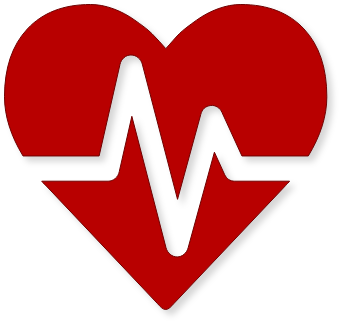 医疗、制药、 康复
医疗、制药、 康复
 纽约州
纽约州
 美国的大学
美国的大学

 历史
历史
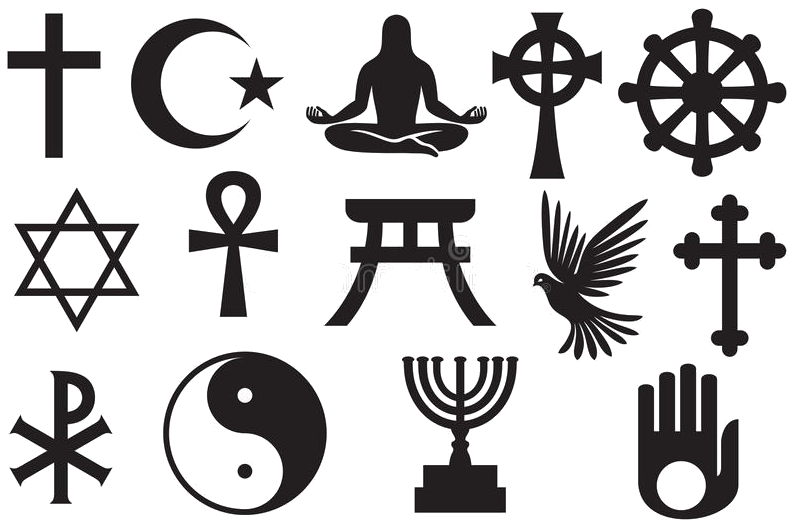 宗教
宗教

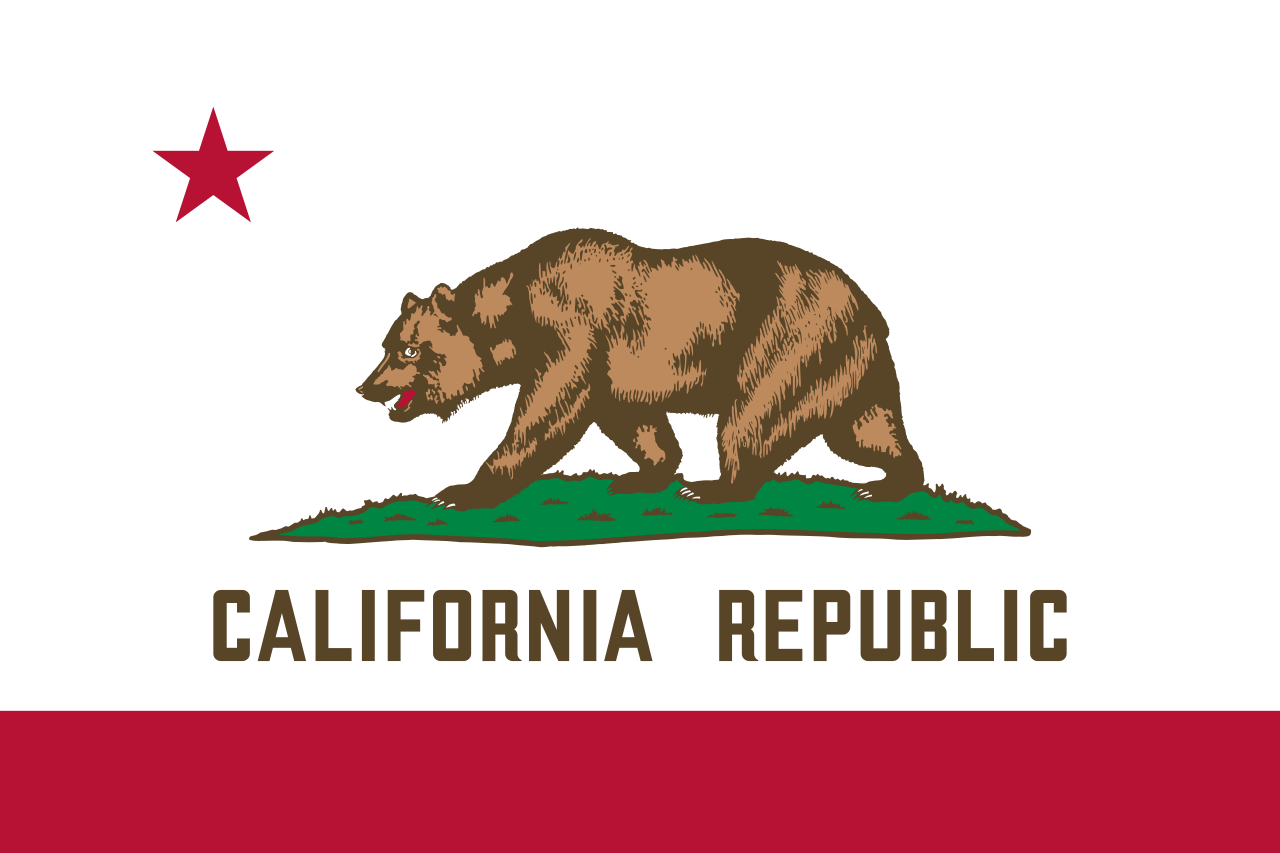 加利福尼亚州
加利福尼亚州


 地理
地理
 手拉手
手拉手
 艺术
艺术
 文学
文学
